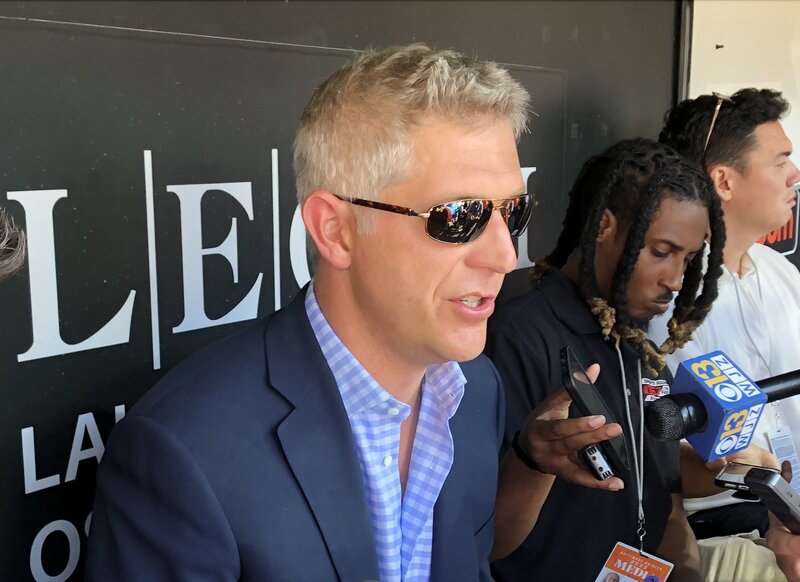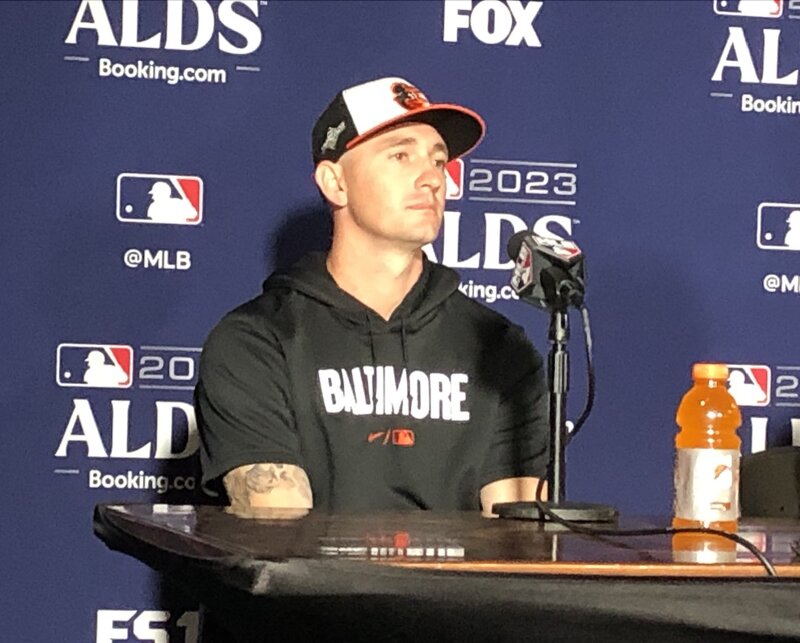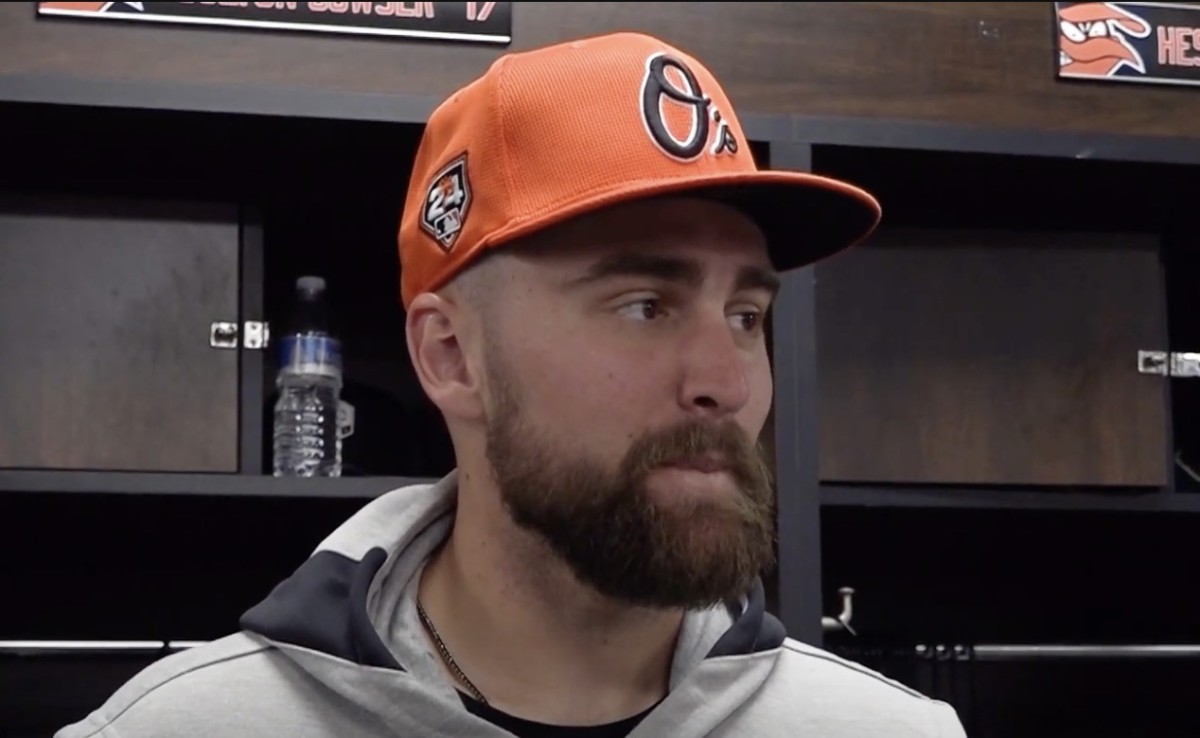The NFL’s window for teams to use the franchise tag on a pending unrestricted free agent opens Tuesday, but whether the Ravens go that route with four-time Pro Bowl inside linebacker C.J. Mosley remains to be seen.
New general manager Eric DeCosta expressed his desire to keep Mosley during his introductory press conference last month, but the start of free agency is now just over three weeks away. And with each passing day, the thought of hitting the open market has to be more appealing for the 2014 first-round pick who won’t turn 27 until June. The Ravens can prevent that from happening, of course, by either striking a long-term extension or using the tag, which is projected to cost over $15.5 million for a linebacker — inside or outside — for the 2019 season. That alone would exhaust almost half of Baltimore’s projected cap space upon the completion of the Joe Flacco trade to Denver next month.
“I think everything is on the table right now,” said DeCosta when asked if using the franchise tag on Mosley was a possibility. “I certainly hope that C.J. is back. I believe in my heart that he will be. We’re having those discussions now. I think we have several different strategies in place. We’re in the business of keeping our good football players. Talent wins in the NFL and he’s a Pro Bowl linebacker, so we’re going to do what we can to make sure that C.J. is back on the team.”
The franchise tag would be a steep price since the highest-paid inside linebacker in the league — Carolina’s Luke Kuechly — makes just $12.359 million per season, but the average annual value of that deal was a contract extension signed back in 2015, a long time in NFL terms. That’s where we keep encountering the same question about Mosley, which might explain why a deal many anticipated as early as last offseason hasn’t yet come to fruition.
What exactly is he worth to the Ravens and on the open market?
Mosley doesn’t meet the impossible standard set by Hall of Famer Ray Lewis and may not be in the same elite tier as Kuechly or Seattle’s Bobby Wagner among his contemporaries, but he is widely recognized as one of the NFL’s top inside linebackers and is constantly praised in the Baltimore locker room for his unassuming leadership, something that can’t be ignored with Terrell Suggs and Eric Weddle both nearing the end of their careers and uncertain to return next season. The only other Ravens to make the Pro Bowl four times in their first five seasons were Lewis and fellow Hall of Famer Jonathan Ogden, illustrating the rare territory Mosley has reached in a short period of time.
Losing him would leave the Ravens with former undrafted free agent Patrick Onwuasor and 2018 fourth-round pick Kenny Young at inside linebacker next season. Both are talented players, but neither could reasonably be expected to step into Mosley’s role without substantial drop-off. In other words, inside linebacker would immediately become a need should Mosley depart.
But there are still questions that make you take pause before potentially making him the highest-paid inside linebacker in the NFL. His pass coverage has often come under scrutiny as Pro Football Focus graded him just 31st among qualified linebackers in that category despite crediting him with career bests in passing yards allowed (408), yards per reception (9.3), and yards after the catch (190) in 2018. The Alabama product graded 22nd overall among qualified linebackers in 2018 after finishing 37th at the end of the 2017 regular season and 11th in 2016. Those numbers would support the less flattering opinions of Mosley being a consistently solid-to-good player, but not a great one worthy of a lucrative contract.
There’s also the topic of positional value with Mosley’s biggest strength being his run defense in a league increasingly driven by the passing game. Many of the same critics of the five-year, $52.5 million contract awarded to run-stopping nose tackle Brandon Williams two offseasons ago don’t want to see the Ravens spend big on an inside linebacker who isn’t dynamic in pass coverage, especially with so many other needs to address on both sides of the ball. At the very least, Mosley plays every down unlike Williams, who participated in just 50 percent of defensive snaps this past season.
“You can get caught up in these types of positions that guys get paid,” DeCosta said. “‘You should pay the left tackle or you pay the corner, but not pay the defensive tackle or the inside linebacker.’ That’s all well and good unless someone rushes for 250 yards against you. Then, all of a sudden, you change the dynamic and say, ‘Well, we should sign the inside linebacker or the defensive tackle.’ You want to be a balanced team, you want as many good players as you can. You try to fit that in under the parameters of the salary cap that you can.”
Opinions are split on what Mosley would be worth on the open market with Jason Fitzgerald of OverTheCap.com projecting him to receive $11.5 million per year and Spotrac.com’s calculated market value at only $9.7 million per season. The average annual value of the deals for Kuechly ($12.359 million) and Wagner ($10.75 million) aren’t the most helpful guidelines since the salary cap has increased annually since those extensions were signed nearly four years ago. Mosley wanting to eclipse those marks would be a reasonable goal when considering his age and a salary cap expected to approach $190 million this coming season.
If he does indeed hit the market, all it takes is one or two interested teams with substantially more cap space than Baltimore to drive up the linebacker’s price to the point where the franchise tag suddenly doesn’t look as lucrative as it does now. That’s why the tag is something DeCosta and the Ravens must at least consider between Tuesday and March 5 — the final day a team can use it on a player — if they’re determined to keep Mosley but an agreement isn’t imminent.
Both sides know the tag is at least a possibility, which should help push discussions to keep Mosley in Baltimore — if that’s what both he and the Ravens ultimately want.
But the clock is ticking louder every day.










